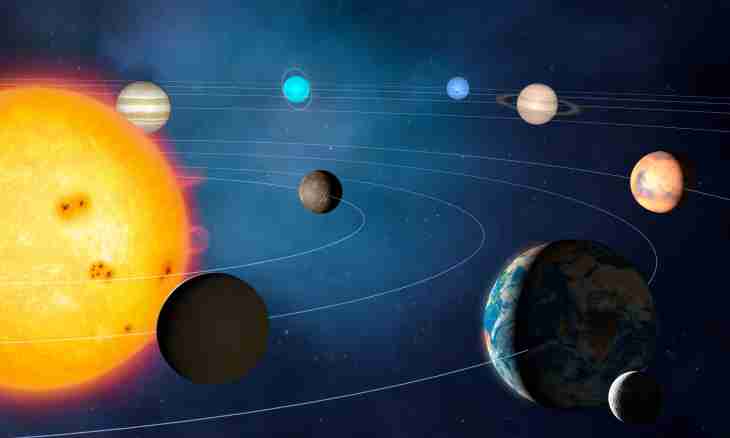Those who continue to consider that the Solar system includes nine planets, are deeply mistaken. The thing is that in 2006 the Pluto was deducted from the big nine and now treats the category of dwarf planets. Usual remained eight though the authorities of Illinois legislatively fixed in the state beyond Pluto the former status.
Instruction
1. After 2006 Mercury began to carry a rank of the smallest planet. It is of interest to scientists as because of an unusual relief in the form of the gear slopes covering all surface and the rotation period round its pivot-center. It appears, it everything is one third less than time of a whole revolution around the Sun. It happens because of strong tidal influence of a star which slowed down natural rotation of Mercury.
2. Venus, the second in range from the center of gravity, is famous for "fervor" - temperature of its atmosphere even more, than at the previous object. The effect is caused by the greenhouse system which is available on it arose thanks to the increased density and prevalence of carbon dioxide.
3. The third planet – Earth – is the habitat of people, and meanwhile it only where presence of life is precisely recorded. It has what is not present at previous two – the satellite under Long's name which joined it soon after emergence, and there was this significant event about 4.5 billion years ago.
4. The most aggressive sphere of the Solar system it is possible to call Mars: its color red because of high percent in the soil of oxide of iron, the geological activity ended only 2 million years ago, and two satellites were involved violently from among asteroids.
5. The fifth in remoteness from the Sun, but the largest Jupiter has unusual history. It is considered that it had all inclinations to transformation in the brown dwarf – a small star, the smallest of this category surpasses it in the diameter only for 30%. Big, than is, Jupiter will not receive dimensions any more: if its weight increased, it would lead under the influence of gravitation to increase in density.
6. Saturn only among all others possesses a noticeable disk – Cassini's belt consisting of the small objects and fragments which surrounded it. As well as Jupiter, it belongs to the class of gas giants, but considerably concedes on density not only it, but also terrestrial water. Despite "gaseousness", Saturn has the real northern lights on one of the poles, and its atmosphere storms hurricanes and storm.
7. Following according to the Uranium list, as well as his neighbor Neptun, treats the category of ice giants: its subsoil contains so-called "hot ice", from usual differing in high temperature, but not evaporating because of strong compression. Besides "cold" making, on Uranium there is also a number of rocks and also complex structure of clouds.
8. Closes the Neptune list opened in very unusual way. Unlike other planets found by method of visual observation that is in the telescope and more difficult optical devices, the Neptune noticed not at once but only thanks to strange behavior of Uranium. Later by difficult calculations the location of the mysterious object influencing on it was revealed.

